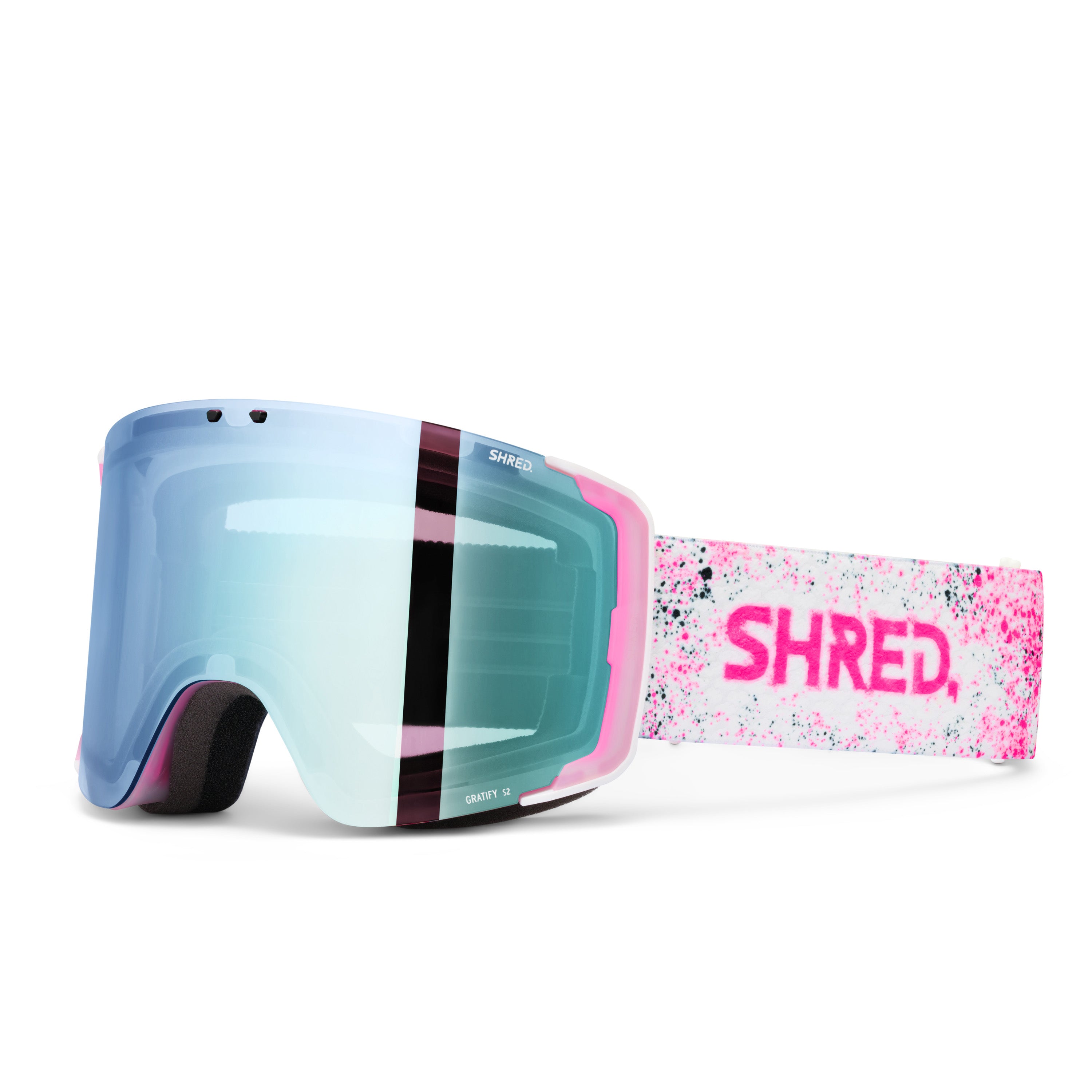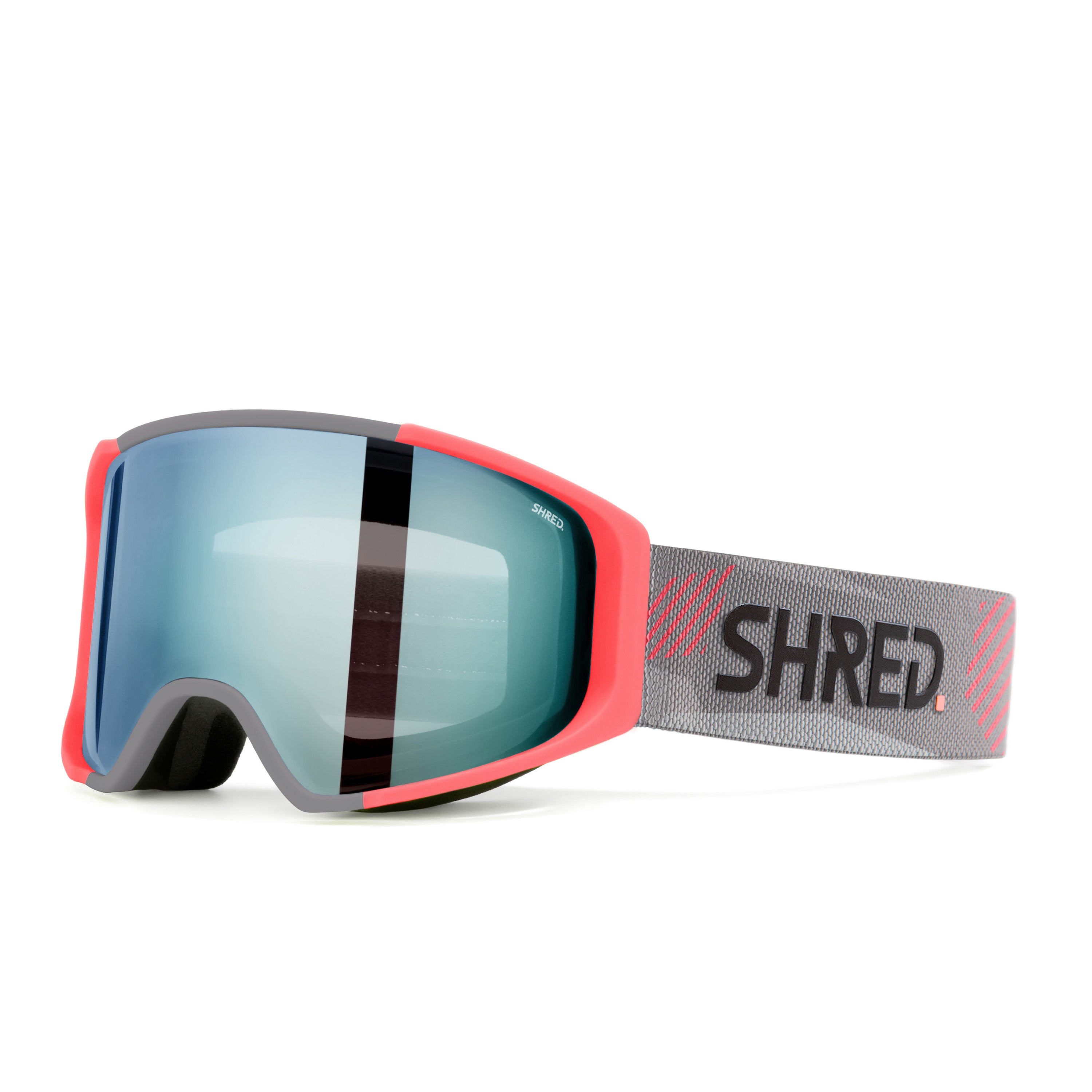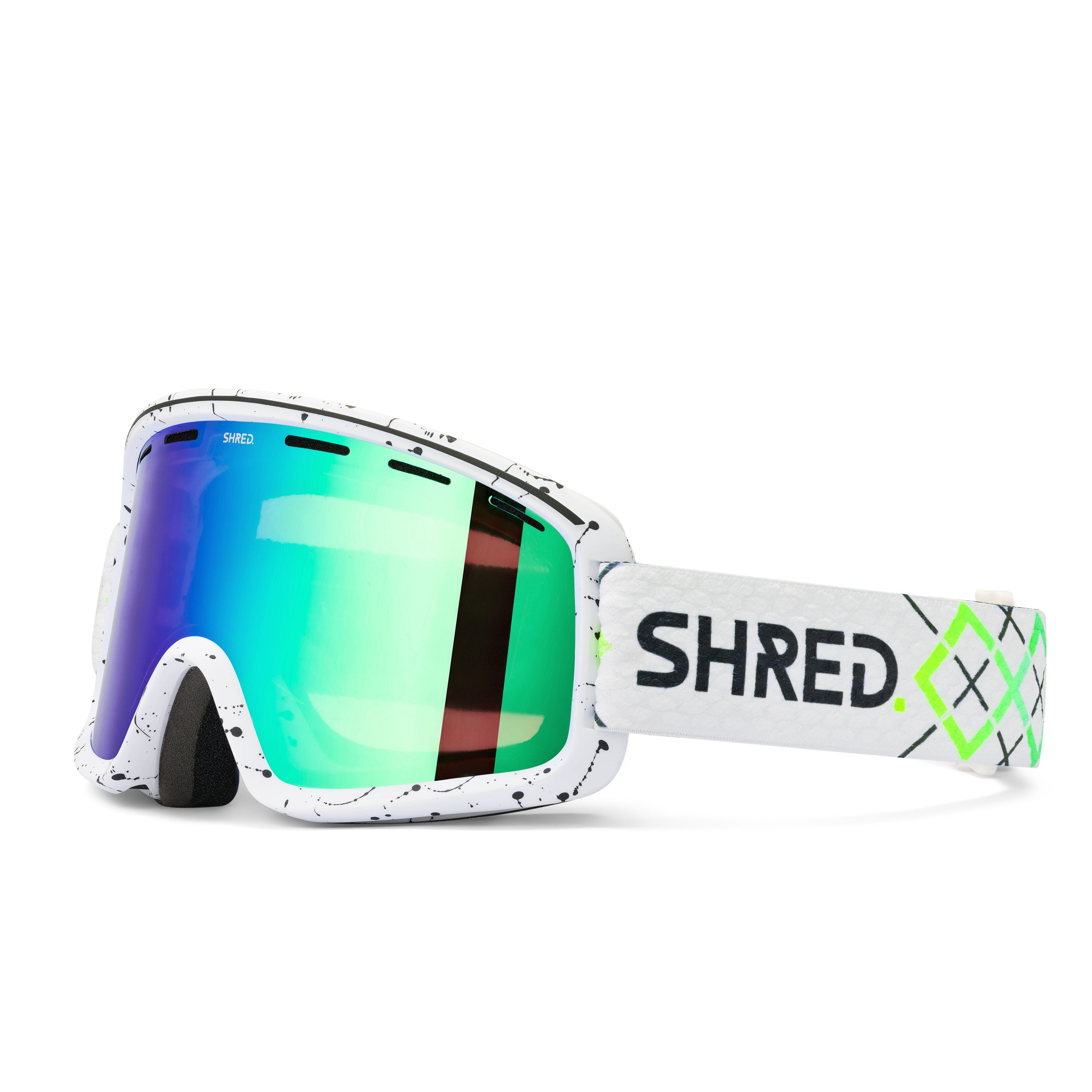Important above all, every time, no matter what: Never touch the inside of the lens! Especially when wet! Why? Because the inside lens is extremely delicate as it is treated to prevent the lens from fogging. The treatment is particularly sensitive and can get easily compromised if you do not care for it in the proper way.
On-Slope Goggle Care:
Protecting your goggles on the mountain is crucial. On the mountain, the golden rule is simple – a fog-free goggle is a goggle on your face. Resist the urge to lift your goggles up to your helmet or beanie in adverse weather. This practice keeps the foam dry, preventing fogging and ensuring optimal visibility. So please follow these essential tips to maintain clarity in all weather conditions:
- Avoid Lifting Goggles in Bad Weather: Keep them on to prevent the foam from getting wet, which leads to fogging.
- Outside Lens Cleaning: Always carry your soft goggle case, making sure it is clean from dust and dirt and use it flipped it inside out to gently wipe the lens to remove any dirt or grease you may have collected.
- Careful Cleaning: If your goggles get wet or snowy, gently tap off excess moisture and softly wipe with your goggle bag. For the inner lens, ONLY when extremely necessary, pat VERY VERY gently with a tissue. IN ANY CASE AVOID wiping when wet to protect the anti-fog coating.
Off-Snow Goggle Maintenance:
Once off the slopes, proper care ensures longevity and performance:
- Drying: Disassemble the lens from the frame and air dry them in a cool, dry place. This allows you to completely dry both.
- Regular Checks: Regularly inspect your lenses for scratches or wear that can impair vision and protection.
- Outside Lens Cleaning: Use your soft goggle case, making sure it is clean from dust and dirt and use it flipped inside out to gently wipe the lens to remove any dirt or grease you may have collected.
- Inside Lens Gentle Cleaning: Wait until the lens is completely dry before attempting to clean. Rubbing a wet anti-fog layer will scratch the lens and damage its effectiveness. Use your clean microfiber goggle bag for gentle tapping and extremely gentle wiping. For stubborn spots, please refer to the Lens Anti-Fog Recovery Process below.
- Avoid Rubbing When Wet
- Storage: Store them in a protective soft or hard case away from direct sunlight to avoid UV damage.
- Storage case PRO TIP: when storing your goggles inside the soft case, always pull the goggle strap to make it extend outside the goggle bag and tie the bag closing rope knot to keep that tension on the strap like in the image below. This avoids that the strap touches the inner lens, transferring onto it dirt, grease, finger prints, etc.


Lens Anti-Fog Recovery Process:
Once again, goggles are equipped with a delicate anti-fog layer that requires careful handling. Here's how to rejuvenate this layer, especially if you have ongoing issues with fogging:
- Gather up the following materials: measuring cup, teaspoon, dishwasher detergent, and your goggle bag.
- Mix 1 teaspoon (5ml) of the dishwashing detergent with 1 & 1/4 cup of water (300ml).
- Take a soft cloth or your SHRED goggle bag and dip it in the detergent mix.
- Gently wipe the area with water spots.
- Run the same cloth or goggle bag under clean water.
- Wipe off the lens a few times.
- Let the lens air dry in a cool place for 40 minutes.

Additional Lens Protection Tips: The Inside Matters Most
While taking care of the outside of your goggle lens is important, it's vital to remember that the interior lens is even more delicate and requires special attention. Many skiers and snowboarders use external lens protection (“socks”) like the one in the image below to protect their goggles both on snow and for storing them, but this primarily guards the exterior lens.

The inside lens, treated with anti-fog coatings and other sensitive materials, is more susceptible to damage. When storing your goggles, ensure they are placed in a traditional goggle bag that covers the entire goggle. This type of bag provides comprehensive protection and is particularly effective in safeguarding the delicate inner lens from scratches, grease, and dirt – elements that can easily compromise the anti-fog coating and clarity of vision. By prioritizing the protection of the inner lens, you ensure a consistently clear and fog-free vision, enhancing your overall experience on the slopes.
Conclusion:
Embrace every snowy adventure with confidence. By following these simple yet effective goggle care tips, you'll ensure optimal performance and longevity of your goggles. Here's to clear vision and unforgettable moments on the mountain!















































































































Leave a comment
This site is protected by hCaptcha and the hCaptcha Privacy Policy and Terms of Service apply.